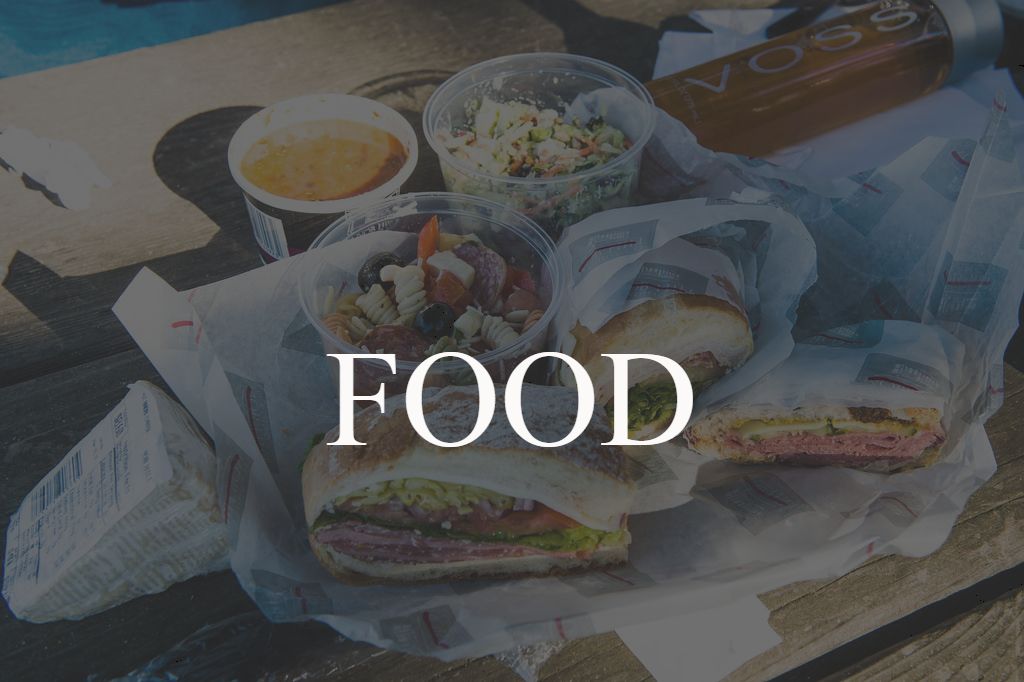Intro. to Wine Tasting-In Depth
By Lauriann Greene-Sollin, Sommelier-Conseil
Reproduced with permission from French Wine Explorers - Wine Tours of France at www.wine-tours-france.com
A step-by-step guide for beginners and great review for experienced tasters.
Why do we taste wine instead of just drinking it? To better appreciate it’s qualities, to assess whether the wine is drinkable (like when the waiter pours a little of the wine you ordered into your glass for you to taste at a restaurant), and to be able to identify typical aromas and tastes of certain wines so you can see if you like them (and to help you remember which ones you liked when you next shop for wine). The more you know about any subject that is complex (like wine, music, art, etc.), the deeper your understanding and the more lively your enjoyment. Wine should first and foremost be a pleasure, and wine tasting should be fun and add to your pleasure in drinking wine.
Reproduced with permission from French Wine Explorers - Wine Tours of France at www.wine-tours-france.com
A step-by-step guide for beginners and great review for experienced tasters.
Why do we taste wine instead of just drinking it? To better appreciate it’s qualities, to assess whether the wine is drinkable (like when the waiter pours a little of the wine you ordered into your glass for you to taste at a restaurant), and to be able to identify typical aromas and tastes of certain wines so you can see if you like them (and to help you remember which ones you liked when you next shop for wine). The more you know about any subject that is complex (like wine, music, art, etc.), the deeper your understanding and the more lively your enjoyment. Wine should first and foremost be a pleasure, and wine tasting should be fun and add to your pleasure in drinking wine.

It’s important to set the stage for a group wine tasting.
Photo: "tasting wine is such hard work" by jm3 is licensed under CC BY-SA 2.0
The room should be brightly lit, so you can clearly see the wine in the glass. You should use clear glasses (never colored) that are designed for wine tasting: they should close in toward the top to concentrate the aromas. The room should be free of smoke and other smells that could distract from the smells of the wine (tell your guests to not wear perfume that day!). Place a white tablecloth on the tasting table – this helps you accurately assess the color of the wine. Put some bread on the table if people want to cleanse their palates between wines, although this is not really necessary. Provide paper and pencils so everyone can note their impressions of the wine. Pour only a small amount of wine in each glass, about a third full is enough. Provide some recepticles (like wine buckets) for those who wish to spit out the wine instead of swallowing it during the tasting (this is perfectly acceptable behavior – all wine professionals do it). Spitting will allow you to taste more wine, since you won’t get the effect of the alcohol.
Choose three wines for your first wine tasting: start with a white, then two reds. Some easy wines to start tasting with are Beaujolais, white wines like Sancerre or Chablis, or a Pinot Gris - they have typical aromas that are usually easy to recognize. You'll be able to taste three wines without becoming saturated; as you get more experience, you can increase the number of wines you taste in one tasting session.
There are three basic steps to tasting wine:
1. The Look of the wine
2. The Smell of the wine (also called the Nose)
3. The Taste of the wine
and the culmination of the tasting: The Evaluation of the Wine
Photo: "tasting wine is such hard work" by jm3 is licensed under CC BY-SA 2.0
The room should be brightly lit, so you can clearly see the wine in the glass. You should use clear glasses (never colored) that are designed for wine tasting: they should close in toward the top to concentrate the aromas. The room should be free of smoke and other smells that could distract from the smells of the wine (tell your guests to not wear perfume that day!). Place a white tablecloth on the tasting table – this helps you accurately assess the color of the wine. Put some bread on the table if people want to cleanse their palates between wines, although this is not really necessary. Provide paper and pencils so everyone can note their impressions of the wine. Pour only a small amount of wine in each glass, about a third full is enough. Provide some recepticles (like wine buckets) for those who wish to spit out the wine instead of swallowing it during the tasting (this is perfectly acceptable behavior – all wine professionals do it). Spitting will allow you to taste more wine, since you won’t get the effect of the alcohol.
Choose three wines for your first wine tasting: start with a white, then two reds. Some easy wines to start tasting with are Beaujolais, white wines like Sancerre or Chablis, or a Pinot Gris - they have typical aromas that are usually easy to recognize. You'll be able to taste three wines without becoming saturated; as you get more experience, you can increase the number of wines you taste in one tasting session.
There are three basic steps to tasting wine:
1. The Look of the wine
2. The Smell of the wine (also called the Nose)
3. The Taste of the wine
and the culmination of the tasting: The Evaluation of the Wine

1. The Look
Photo: "Tasting wine" by mickou is licensed under CC BY-SA 2.0
Hold the glass up in front of your eyes, and tilt it slightly. Try to come up with a name for the color you see. The color of the wine can tell you something about its age, where it comes from, and its concentration. Young red wines are the color of the grapes themselves: violet- or ruby-laced red. As they get older, they become true red, and then orangey or even brownish-red. White wines are generally a light straw or golden color, becoming deeper yellow as they age, and turning toward amber when they're really old. Here are the typical colors of red, white and rosé wines :
Note the color of your wine and its intensity on your paper.
Now ascertain whether the wine is transparent. Winemakers these days work hard to make their wines as transparent and brilliant (reflective) as possible as this is the preference of the modern consumer. If the wine is not transparent (cloudy), or is kind of matte rather than brilliant, these can be signs that the wine was either not filtered (which isn't a defect), or has some kind of bottle sickness (which is a defect). Some winemakers choose not to filter their wines. Wines left deliberately unfiltered are, of course, drinkable ; sick wine, on the other hand, should not be drunk.
From the look of the wine, we can tell something about it’s age, the grape variety (chardonnays tend to have a greenish tint, for example), where it was produced, and get the first indications of whether it is still in good shape and drinkable.
Photo: "Tasting wine" by mickou is licensed under CC BY-SA 2.0
Hold the glass up in front of your eyes, and tilt it slightly. Try to come up with a name for the color you see. The color of the wine can tell you something about its age, where it comes from, and its concentration. Young red wines are the color of the grapes themselves: violet- or ruby-laced red. As they get older, they become true red, and then orangey or even brownish-red. White wines are generally a light straw or golden color, becoming deeper yellow as they age, and turning toward amber when they're really old. Here are the typical colors of red, white and rosé wines :
- Red : ruby red (pinkish), violet-colored (dark and purpley), garnet red (orangey), brick red (burnt, orangey red, for older wines)
- White : pale straw yellow, straw yellow, pale golden yellow, green-tinted pale golden yellow, golden yellow, deep yellow, amber-tinged yellow, amber (these last two are usually for older white wines, sweet white wines in particular take on these colors as they age)
- Rosé: grey (the lightest possible pink or orangey tint), onion peel (light orangey), salmon (pink with an orange tint), orange with a pink tint, deep raspberry pink, light red, light pink
Note the color of your wine and its intensity on your paper.
Now ascertain whether the wine is transparent. Winemakers these days work hard to make their wines as transparent and brilliant (reflective) as possible as this is the preference of the modern consumer. If the wine is not transparent (cloudy), or is kind of matte rather than brilliant, these can be signs that the wine was either not filtered (which isn't a defect), or has some kind of bottle sickness (which is a defect). Some winemakers choose not to filter their wines. Wines left deliberately unfiltered are, of course, drinkable ; sick wine, on the other hand, should not be drunk.
From the look of the wine, we can tell something about it’s age, the grape variety (chardonnays tend to have a greenish tint, for example), where it was produced, and get the first indications of whether it is still in good shape and drinkable.

2. The Smell (the Nose)
Photo: "Joan tasting wine at Waterford Wine Estate" by MauritsV is licensed under CC BY 2.0
The First Nose: as soon as the wine is poured into the glass, stick your nose into the bowl of the glass and smell it (yes, your nose needs to be INSIDE the bowl of the glass, not just at the rim !). Usually, this step comes before the Look. Take several small sniffs rather than a large one – a large sniff gives your brain too much information, and you become quickly saturated. The first nose will give you the very first impressions of the aromas of the wine. These first aromas are the most volatile, those that escape easily from the wine. Trust your first reactions, don’t search too hard. Try to identify families of aromas rather than specific aromas: words like "fruity" or "floral" are sufficient at this stage.
* Components of a wine's aroma. Within wine there are volatile and non-volatile compounds that contribute to the make up of a wine's aroma. During the fermentation and for the first few months of a wine's existence, chemical reactions among these compounds occur frequently and a wine's aroma will change more rapidly during this period than at any other point.
More about Aroma's
About Decanting the wine.
Photo: "Joan tasting wine at Waterford Wine Estate" by MauritsV is licensed under CC BY 2.0
The First Nose: as soon as the wine is poured into the glass, stick your nose into the bowl of the glass and smell it (yes, your nose needs to be INSIDE the bowl of the glass, not just at the rim !). Usually, this step comes before the Look. Take several small sniffs rather than a large one – a large sniff gives your brain too much information, and you become quickly saturated. The first nose will give you the very first impressions of the aromas of the wine. These first aromas are the most volatile, those that escape easily from the wine. Trust your first reactions, don’t search too hard. Try to identify families of aromas rather than specific aromas: words like "fruity" or "floral" are sufficient at this stage.
- The Second Nose: swirl the wine in your glass (an easy way to do this is to put the glass on the table, hold it by the foot and make circular motions with your hand). If the wine glass is the right shape (tapered toward the top), the wine will not come out of the glass as you swirl it ! Once again, put your nose into the bowl of the glass and take some small sniffs. If you become saturated and don’t smell anything after a time, take a whiff of the air in the room to cleanse your nasal receptors and then sniff the wine again. The swirling aerates the wine, releasing more of its aromas (those that are less volatile). In French, we say that at this stage, "le vin fait la queu de paon" - the wine opens the peacock tail", meaning that the beauty of the aromas are opened up to be enjoyed. Try now to identify more specific aromas. Wine usually smells like anything except grapes. Most often it smells like other fruits, or like flowers. It can also have grilled/toasted smells (often from oak aging), smells of gasoline or tar, vegetable smells, forest floor smells like mushroom or ferns, animal smells like leather or wet fur, or smells from other families of aromas. If you’re new to wine tasting and you can only identify the families of aromas* (fruit, grilled/toasted, vegetation), that’s fine. Otherwise, see if you can let your imagination go and "free-associate" with your memories of smells you’ve come across in your lifetime. Note these impressions on your paper. Remember, there are NO WRONG ANSWERS!!
* Components of a wine's aroma. Within wine there are volatile and non-volatile compounds that contribute to the make up of a wine's aroma. During the fermentation and for the first few months of a wine's existence, chemical reactions among these compounds occur frequently and a wine's aroma will change more rapidly during this period than at any other point.
More about Aroma's
About Decanting the wine.

3. The Taste
Photo: "Infiniti tasting (wine, rum, cigars)" by Infiniti-BE is licensed under CC BY-SA 2.0
There’s a technique for this part as well. Take a small amount of wine into your mouth. First, "slurp" or "trill" the wine by taking air into your mouth along with the wine in a slurping action (putting your tongue lightly against the inside of your top front teeth helps, too). This once again aerates the wine, which releases more of the aromas. Then "chew" on the wine, which will help it coat all the nooks and crannies of your mouth. Finally, either swallow the wine, or spit it out. If you're going to be tasting a number of wines, your judgment will remain clearer if you spit rather than swallow!
How can you smell aromas once the wine is in your mouth ? You actually can smell aromas better through your mouth than through your nose. At the back of the mouth, there is a passageway that leads directly to the spot high in the nasal cavity that contains your smell receptors that inform your brain of what you are smelling. It’s a much more direct route to these receptors than through your nose, where long, winding canals lead up to the receptors. This effect of smelling through your mouth is called retro-olfaction, and it’s very important in wine tasting. After you have swallowed or spit out the wine, see if you can find more aromas than you had found by smelling with your nose, and note these aromas. Then compare the aromas you found with your mouth with those you found with your nose, and see if they are similar. If the aromas are basically the same, this is a sign of a well-made wine. If they are different, this can be jarring and therefore unpleasant, and thus possibly a sign of low quality.
Now take another sip of the wine, slurp and chew it, and swallow it or spit it out. This time, you’re going to try to identify the tastes of the wine. White wines have three main taste components : acidity, alcohol, and "moelleux" or "gras", which translates to fatness/richness/smoothness. Red wines have these three taste components, but also a fourth, astringency, a result of the tannins* in the wine. You’ll feel the acidity of the wine at the sides of your mouth next to your tongue where your salivary glands are located : a wine with a good acidity will make you salivate. The alcohol gives a sensation of heat in your mouth, and in your throat when you swallow it. The fatness is a sensation of unctuousness, roundness and fullness in the mouth. Astringency is a feeling of light dryness, pungency or "puckery" quality felt mostly in the middle of the tongue and in the cheeks. Note the degree to which you perceive each of these flavors. You can use a scale of 1-5 if you wish, with 1 being the lowest degree and 5 being the highest.
* What are tannings? Of vegetable origin and found in the seeds and stems of grapes, and also in the oak wood of the barrels. Tannins are also very clear in tea. Tannins are important for wines (mainly red) as they help wines in long aging. Quality wines see the level of tanning reduce as they age, and in the process they mellow and develop character. In some cases wine present too many and too astringent tannins, which translate in poor wines.
Temperature - The temperature that a wine is served at can greatly affect the way it tastes and smells. More.
What are the sulfites that I see written in wine labels? They are a chemical compound that occurs naturally at low levels during wine fermentation. They are also normally added by the producer during fermentation to protect and preserve the wine's .
What’s most important about identifying the tastes of the wine is finding the balance between them. In a good quality wine, no one taste will dominate. They will exist harmoniously together, enhancing each other rather than fighting with each other. A well-balanced wine is a quality wine.
Photo: "Infiniti tasting (wine, rum, cigars)" by Infiniti-BE is licensed under CC BY-SA 2.0
There’s a technique for this part as well. Take a small amount of wine into your mouth. First, "slurp" or "trill" the wine by taking air into your mouth along with the wine in a slurping action (putting your tongue lightly against the inside of your top front teeth helps, too). This once again aerates the wine, which releases more of the aromas. Then "chew" on the wine, which will help it coat all the nooks and crannies of your mouth. Finally, either swallow the wine, or spit it out. If you're going to be tasting a number of wines, your judgment will remain clearer if you spit rather than swallow!
How can you smell aromas once the wine is in your mouth ? You actually can smell aromas better through your mouth than through your nose. At the back of the mouth, there is a passageway that leads directly to the spot high in the nasal cavity that contains your smell receptors that inform your brain of what you are smelling. It’s a much more direct route to these receptors than through your nose, where long, winding canals lead up to the receptors. This effect of smelling through your mouth is called retro-olfaction, and it’s very important in wine tasting. After you have swallowed or spit out the wine, see if you can find more aromas than you had found by smelling with your nose, and note these aromas. Then compare the aromas you found with your mouth with those you found with your nose, and see if they are similar. If the aromas are basically the same, this is a sign of a well-made wine. If they are different, this can be jarring and therefore unpleasant, and thus possibly a sign of low quality.
Now take another sip of the wine, slurp and chew it, and swallow it or spit it out. This time, you’re going to try to identify the tastes of the wine. White wines have three main taste components : acidity, alcohol, and "moelleux" or "gras", which translates to fatness/richness/smoothness. Red wines have these three taste components, but also a fourth, astringency, a result of the tannins* in the wine. You’ll feel the acidity of the wine at the sides of your mouth next to your tongue where your salivary glands are located : a wine with a good acidity will make you salivate. The alcohol gives a sensation of heat in your mouth, and in your throat when you swallow it. The fatness is a sensation of unctuousness, roundness and fullness in the mouth. Astringency is a feeling of light dryness, pungency or "puckery" quality felt mostly in the middle of the tongue and in the cheeks. Note the degree to which you perceive each of these flavors. You can use a scale of 1-5 if you wish, with 1 being the lowest degree and 5 being the highest.
* What are tannings? Of vegetable origin and found in the seeds and stems of grapes, and also in the oak wood of the barrels. Tannins are also very clear in tea. Tannins are important for wines (mainly red) as they help wines in long aging. Quality wines see the level of tanning reduce as they age, and in the process they mellow and develop character. In some cases wine present too many and too astringent tannins, which translate in poor wines.
Temperature - The temperature that a wine is served at can greatly affect the way it tastes and smells. More.
What are the sulfites that I see written in wine labels? They are a chemical compound that occurs naturally at low levels during wine fermentation. They are also normally added by the producer during fermentation to protect and preserve the wine's .
What’s most important about identifying the tastes of the wine is finding the balance between them. In a good quality wine, no one taste will dominate. They will exist harmoniously together, enhancing each other rather than fighting with each other. A well-balanced wine is a quality wine.
And finally : The Evaluation
You have one step left in your wine tasting. Take one last sip of the wine, slurp it and chew it, and then swallow it or spit it out. As soon as the wine is no longer in your mouth, try to determine how long you still perceive the AROMAS (not the tastes) of the wine. Count off seconds in your head ("one mississippi, two mississippi” . . .), until you no longer perceive any aromas (the seconds are called "caudalies" in wine lingo). This is known as thepersistence of the wine. In a quality wine, you will perceive the aromas for many seconds after it is no longer in your mouth. A wine whose aromas last less than 4 seconds in the mouth is considered to be "short" in terms of persistence ; 4-6 seconds is "medium", and a wine lasting 7-12 seconds is considered "long". Grand Cru wines generally have a long persistence.
Look over your notes, and try to come to a conclusion about this wine. Did it have a pleasing color, and was it transparent and brilliant to the eye? Was it aromatic? Were the aromas pleasing and complex? Did you find the same aromas when the wine was in your mouth as when you smelled it with your nose? Were the flavors of the wine in balance? Did it persist a long time on your palate? Finally, DID YOU LIKE IT ? This last judgment is strictly personal, and has nothing to do with objective quality and everything to do with whether you’re going to buy and drink this wine in the future. Give the wine a score based on your objective analysis: use the same 1-5 scale if you like. You might want to give a second score for how much you liked it. Save your wine tasting notes for your future reference, for meal planning and making purchases.
With practice, these wine tasting steps become second nature and you can go through them very quickly. If you’re like me, you’ll end up slurping and chewing all of your beverages, even water!
Try to "taste" your wine instead of just "drinking" it from now on. You’ll get a greater enjoyment from your wine and sharpen your skills as you go along. Who knows, you may end up being the next Robert Parker ! -- Lauriann Greene
For an excellent article by Matt Kramer on what makes a good wine taster, please go to:
http://www.winespectator.com/Wine/Main/Feature_Basic_Template/1,1197,1355,00.html
You have one step left in your wine tasting. Take one last sip of the wine, slurp it and chew it, and then swallow it or spit it out. As soon as the wine is no longer in your mouth, try to determine how long you still perceive the AROMAS (not the tastes) of the wine. Count off seconds in your head ("one mississippi, two mississippi” . . .), until you no longer perceive any aromas (the seconds are called "caudalies" in wine lingo). This is known as thepersistence of the wine. In a quality wine, you will perceive the aromas for many seconds after it is no longer in your mouth. A wine whose aromas last less than 4 seconds in the mouth is considered to be "short" in terms of persistence ; 4-6 seconds is "medium", and a wine lasting 7-12 seconds is considered "long". Grand Cru wines generally have a long persistence.
Look over your notes, and try to come to a conclusion about this wine. Did it have a pleasing color, and was it transparent and brilliant to the eye? Was it aromatic? Were the aromas pleasing and complex? Did you find the same aromas when the wine was in your mouth as when you smelled it with your nose? Were the flavors of the wine in balance? Did it persist a long time on your palate? Finally, DID YOU LIKE IT ? This last judgment is strictly personal, and has nothing to do with objective quality and everything to do with whether you’re going to buy and drink this wine in the future. Give the wine a score based on your objective analysis: use the same 1-5 scale if you like. You might want to give a second score for how much you liked it. Save your wine tasting notes for your future reference, for meal planning and making purchases.
With practice, these wine tasting steps become second nature and you can go through them very quickly. If you’re like me, you’ll end up slurping and chewing all of your beverages, even water!
Try to "taste" your wine instead of just "drinking" it from now on. You’ll get a greater enjoyment from your wine and sharpen your skills as you go along. Who knows, you may end up being the next Robert Parker ! -- Lauriann Greene
For an excellent article by Matt Kramer on what makes a good wine taster, please go to:
http://www.winespectator.com/Wine/Main/Feature_Basic_Template/1,1197,1355,00.html















